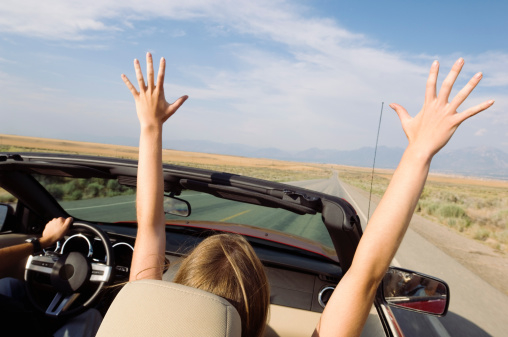 Do you ever find yourself needing to go to the bathroom with a little more frequency and urgency than your friends? I’m sorry; it might have been a little early for that question!
Do you ever find yourself needing to go to the bathroom with a little more frequency and urgency than your friends? I’m sorry; it might have been a little early for that question!
You see, the reason I ask is because over Labor Day weekend, I took a car ride with a friend whose constant need to use the bathroom added an additional 45 minutes to a drive that usually takes two hours!
An overactive bladder is a frustrating condition that results in frequent and sudden urges to urinate. It can lead to feelings of discomfort, isolation, and fear of living life on your own terms. After all, knowing you always have to be close to a bathroom can really make for some limited options.
Although you might not be able to fully control an overactive bladder, there are some foods and drinks that make it worse. By avoiding them, you might be able to stretch the time between bathroom visits, allowing for more comfort and confidence as you live your life.
Top Foods and Drinks to Avoid to Calm an Overactive Bladder
If you have an overactive bladder, here are some foods and beverages that might be responsible for those extra pit stops:
Overactive Bladder Stimulant #1: Alcohol
This might not come as a huge surprise, but alcoholic beverages, like beer, wine, and spirits will increase your urge to urinate. Alcohol also interferes with brain signals concerning the bladder, making it far more likely to send you to the bathroom than water or other beverages. To avoid this, either limit alcohol intake or replace it with water.
Overactive Bladder Stimulant #2: Caffeinated Beverages
Coffee, tea, energy drinks, and cola can shorten periods between bathroom breaks. Caffeine stimulates muscle contractions that can signal it’s time to go to the bathroom. For example, when you drink coffee before a long car ride, it will likely result in more pee breaks. To avoid this, try to drink decaffeinated drinks or low-acid coffees.
Overactive Bladder Stimulant #3: Chocolate
Chocolate contains caffeine and other acids that stimulate the bladder. Try to avoid chocolate in the evening, and at other times when you don’t want to rush to the bathroom.
Overactive Bladder Stimulant #4: Citrus Fruit, Juices, Cranberries
Citrus fruits and juices, along with tomatoes and cranberries, are all high-acid foods that can increase one’s urge to pee. To see if these foods are affecting you, try eliminating them from your diet and slowly reintroducing them in small amounts. If you notice any difference in your bathroom habits, you’ve likely found the source.
Change Your Diet for Bladder Comfort
Changing your diet might not cure an overactive bladder, but it can reduce the urgency and frequency of bathroom visits. By making a few adjustments, you can buy some time and comfort!
Read Next:
-
Bladder Inflammation (Interstitial Cystitis): Causes, Diagnosis, and Natural Treatments
- Hidden Causes of Bladder Pain and Natural Treatment Options
Sources for Today’s Article:
Ratini, M., “Foods and Drinks that Make You Gotta Go,” WebMD web site, May 29, 2015; http://www.webmd.com/urinary-incontinence-oab/ss/slideshow-leaky-bladder-triggers.
“Overactive Bladder,” Mayo Clinic web site, September 26, 2014; http://www.mayoclinic.org/diseases-conditions/overactive-bladder/basics/definition/con-20027632, last accessed September 8, 2015.
